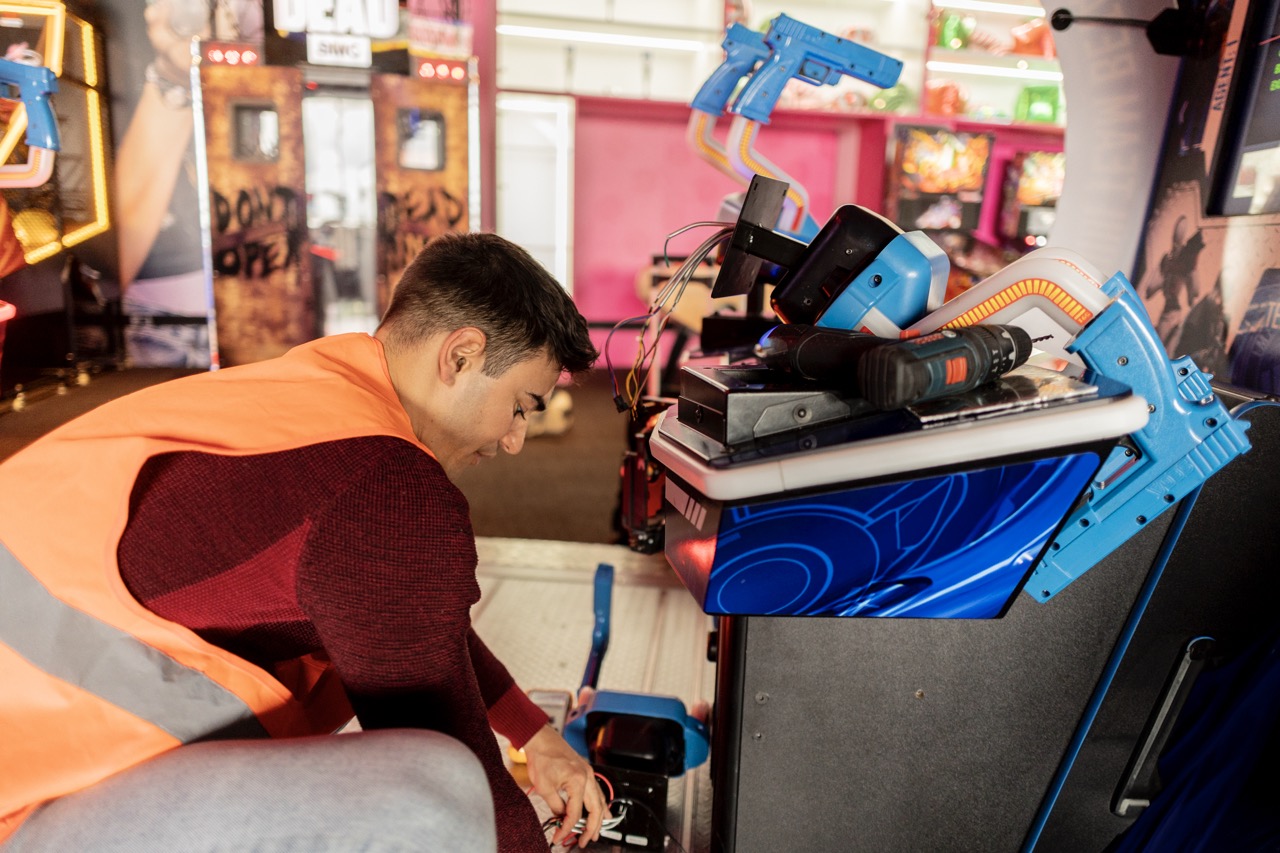Racing games have always been a favorite in the gaming world, but the early ’90s saw a groundbreaking shift that would change everything: the introduction of 3D polygon graphics. Among the pioneers of this revolution was "Virtua Racing," a game that not only redefined what racing games could look like but also set the stage for future innovations in the genre. In this article, we’ll take a closer look at how Virtua Racing emerged as a game changer, transformed arcade experiences, and laid down the foundation for 3D gaming technology.
The Birth of 3D Racing Games: A Game Changer
Before Virtua Racing hit the scene, racing games were largely confined to 2D graphics, with a relatively simple gameplay experience. Titles like "Pole Position" offered fun, but they lacked the depth and immersion that players craved. Enter Virtua Racing in 1992, developed by Sega, which took arcade racing to a whole new level. The game’s use of 3D polygonal graphics marked a seismic shift, pushing the boundaries of what players thought was possible in video games.
What made Virtua Racing truly groundbreaking was its ability to create a sense of speed and realism that was previously unattainable. The game featured a variety of tracks, each designed with dynamic environments, from lush forests to treacherous mountain roads, which further added to the excitement. This not only engaged players but also encouraged them to hone their skills, setting the stage for competitive play in arcades worldwide.
Moreover, Virtua Racing wasn’t just a game; it was an experience. Players were drawn to the vibrant graphics and smooth gameplay, making it a staple in arcades. It paved the way for future 3D racing titles and established a new standard for arcade games, effectively laying the groundwork for what would soon become a thriving genre.
How Virtua Racing Redefined Arcade Experiences
Unlike its predecessors, Virtua Racing provided a multi-faceted experience that included both arcade thrills and competitive racing. The game featured multiple car options, each with distinct handling characteristics, giving players the opportunity to choose their racing style. This variety not only added depth but also encouraged replayability, as players sought to master each vehicle and track.
The game’s cabinet was also revolutionary, featuring a unique design that allowed players to feel as though they were truly behind the wheel. With the option for multiple players, it brought a social aspect to racing games, transforming arcade visits into communal events where friends could compete against each other. The buzz around Virtua Racing led to long lines in arcades, making it a cultural phenomenon of the time.
Additionally, Virtua Racing was one of the first games to incorporate a 3D perspective that allowed players to look around the environment, enhancing the immersion even further. This degree of freedom in gameplay was a novelty and made players feel genuinely engaged in the race, marking a stark contrast to the static backgrounds of earlier racing games.
Behind the Tech: Understanding 3D Polygons
The magic of Virtua Racing lies in its innovative use of 3D polygons, a technology that was still in its infancy at the time. Unlike sprite-based graphics, which rely on pre-rendered images, 3D polygons allow for real-time rendering of objects in a three-dimensional space. This meant that the cars and tracks in Virtua Racing could be manipulated and viewed from different angles, providing a more dynamic and engaging racing experience.
Under the hood, Virtua Racing utilized a specialized hardware configuration known as the Model 1 arcade system, which was designed specifically to handle 3D graphics. This cutting-edge technology enabled smoother frame rates and richer graphics, making it one of the first games to successfully harness the power of 3D rendering in an arcade setting. As a result, players were treated to a visual feast that felt both exciting and realistic.
The game’s development team leveraged complex algorithms to manage the rendering of the racing environment, creating a sense of depth that was unparalleled at the time. By employing techniques like texture mapping and lighting effects, they were able to create a more lifelike representation of the cars and tracks, making players feel as if they were truly racing in a 3D world. This technological leap laid the groundwork for the future of not just racing games, but all video games, as developers began to explore the vast potential of 3D graphics.
Lasting Impact: Virtua Racing’s Legacy Today
Virtua Racing’s influence extends far beyond its arcade cabinet; it has left an indelible mark on the racing game genre and video games as a whole. The game’s technological innovations set a benchmark for future racing titles, inspiring developers to experiment with 3D graphics. It was later followed by numerous sequels and adaptations that built on its foundation, leading to popular franchises like "Gran Turismo" and "Need for Speed."
Beyond technology, Virtua Racing’s impact can be seen in how it cultivated a competitive spirit among players. The rise of multiplayer racing games owes much to the social experience that Virtua Racing provided. It encouraged competitive play and introduced the concept of leaderboards, which remains a standard feature in modern racing games today, allowing players to track their achievements and challenge others.
Finally, Virtua Racing remains a beloved classic, celebrated in gaming history for its innovations. Its legacy endures through remakes, ports to modern consoles, and even mentions in popular culture. Today’s gamers continue to appreciate the roots of 3D racing games, acknowledging that Virtua Racing was a pioneering force that helped shape the landscape of video games as we know it.
Virtua Racing was more than just a game; it was a revolution. With its leap into 3D polygon graphics, it transformed the arcade racing experience and set the standard for what players could expect from future titles. Its lasting impact is still felt today, reminding us that innovation can create waves that resonate far beyond their original splash. So the next time you find yourself zooming through a virtual racetrack, take a moment to appreciate the legacy of Virtua Racing and the pioneering spirit that launched the first 3D polygon revolution.










